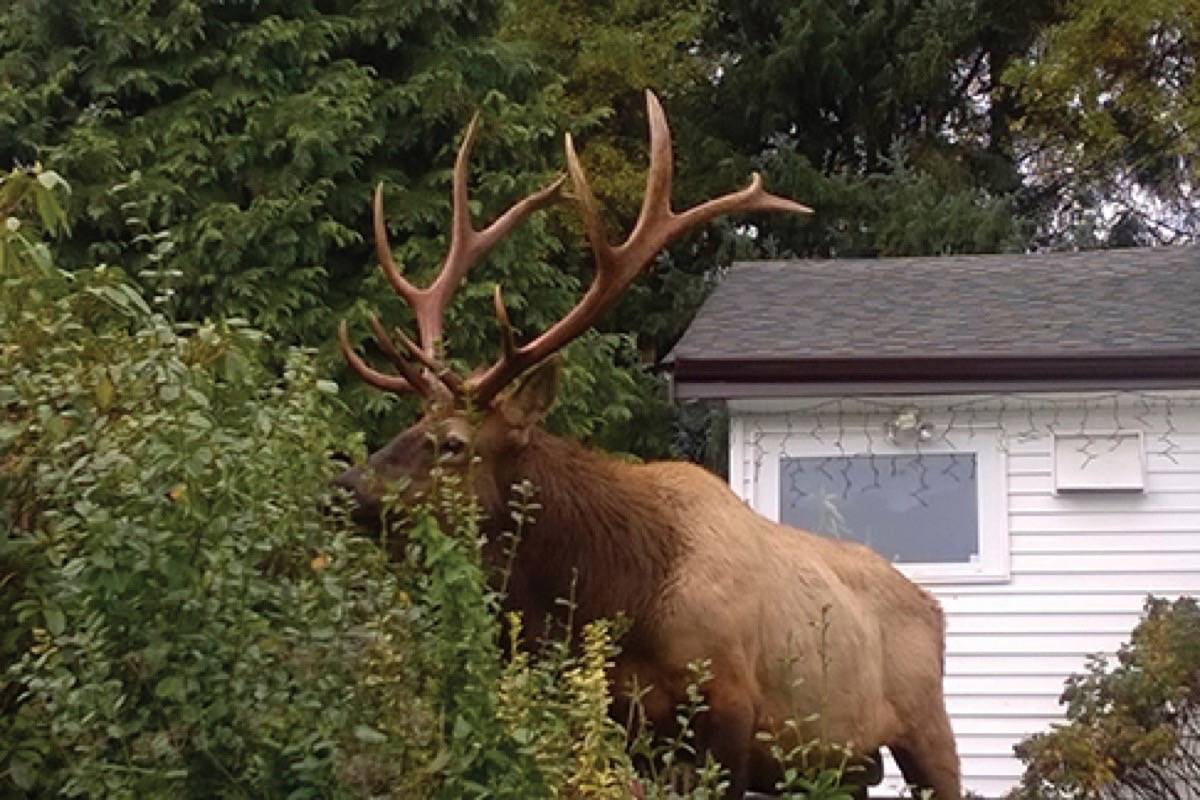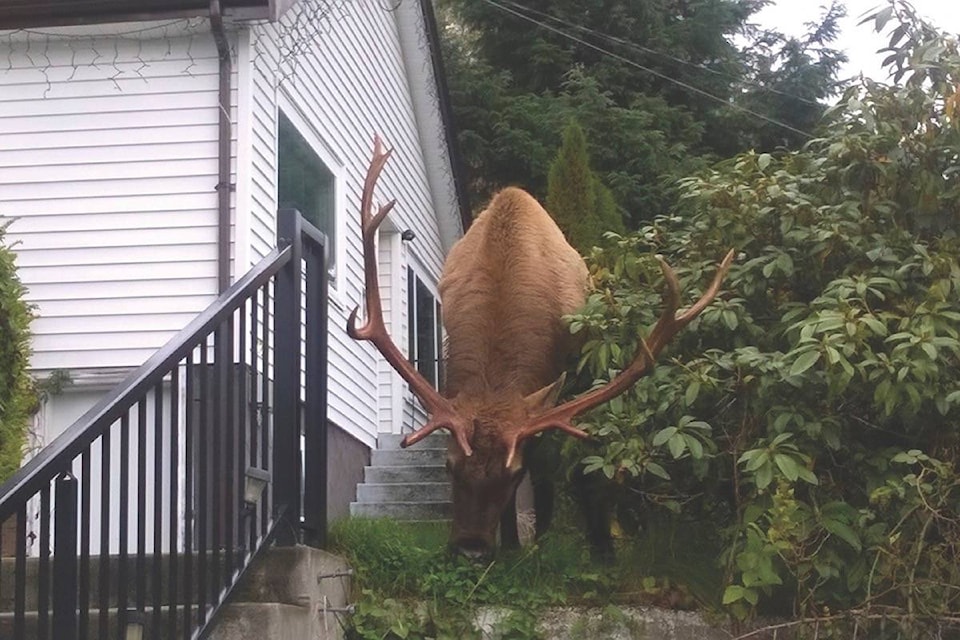How many Roosevelt elk are in the Cowichan Valley? Nobody knows for sure, but at least one Cowichan Valley farmer believes the number is much higher than the provincial government claims.
Shelley Balme runs Balme-Ayr Farms adjacent to Dougan Lake in Cobble Hill. She recently started up a Facebook page called Cowichan Valley Elk in an attempt to obtain accurate numbers of elk in the region.
“We never saw elk up until 15 years ago. Maybe a lone stray but not 60-70 per herd,” she said. “The herds are growing and the Ministry of Environment seems not to think it is a big problem.”
But to her, more elk mean more problems.
First, the massive animals are being struck by motorists. Balme noted that in May three elk were killed on Highway 18 and another one by Dougan Lake.
“Now we are seeing more elk being killed on the highways because they are trying to establish their own territory,” she explained.
Second, “the elk are decimating our crops,” she explained.
Her farm is responsible for feeding 280 cow/heifers “and we are feeding 60 or more elk,” she said. “And in winter they are destroying the fields (tramping all over them) and wrecking fences.”
And it’s not just their property either.
In the last two years two herds have established themselves up Mt. Sicker Road and also on Cameron Taggart Road.
They’re also moving into Laketown Ranch.
“That should go over well,” she said.
They’ve even shown up on Saltspring Island, something that’s not happened since the 1960s, Balme added.
“The elk herds are increasing, having no predators to keep numbers down,” Balme explained. “The herd then splits and the young juveniles are on their own. Then more small herds are started and need to establish their own territory. So this is pushing the elk into smaller farmholds and into people populated areas.”
Who is going to feed these animals, she wondered? They’re leaving the forest due to clear cutting and foraging on seedling trees looking for food.
In an emailed response from staff at the B.C. Ministry of Fish and Wildlife, staff admit that “in some cases, agricultural producers can face a variety of challenges from wildlife, including bears, deer, elk and geese to name a few. In these instances, elk may be considered a nuisance to some people.”
But, said the email, Roosevelt elk are blue-listed, meaning they are considered a vulnerable species in British Columbia, in part because of over-hunting.
RELATED: Vancouver Island elk making a comeback
“They are not currently considered a nuisance species for wildlife management purposes,” said the email.
Fish and Wildlife staff also noted that approximately 15,000 people from across the province apply for limited entry hunting opportunities each year on Vancouver Island alone.
The email also noted the elk are counted “using the most efficient techniques available to ministry wildlife staff.”
Primarily that occurs from the air in late winter when the elk are motivated to move into open areas to feed.
“Aerial inventory also allows for a relatively large area to be counted in a single survey, ensuring that the same animals are not counted repeatedly,” said the staffer.
A “sightability index” takes into account weather conditions, habitat type, snow ground cover and time of day activity in the area, “to apply a correction factor and account for animals that may have been missed, which helps determine a final estimate of the total population from the number of elk observed,” the email continued and that coupled with reports from local naturalists, hunters, farmers, First Nations and public groups as well as conservation officers supplements aerial survey results.
“Combined, these methods produce a fairly accurate representation of elk populations. While there may be small variances in actual populations from the estimated numbers, the large variances that have been suggested are not possible,” said the wildlife staffer.
Tell that to Balme.
“The ministry does not have a grasp on this situation,” she said. “They claim there were 60 elk in 2012 and 78 in 2016 from Highway 18 to Koksilah ridge. In 2012 there were 60 in our fields alone.”
sarah.simpson@cowichanvalleycitizen.com
Like us on Facebook and follow us on Twitter

